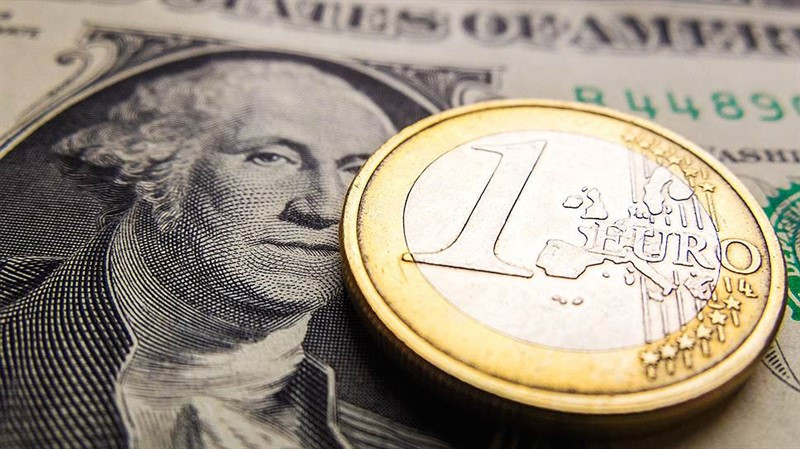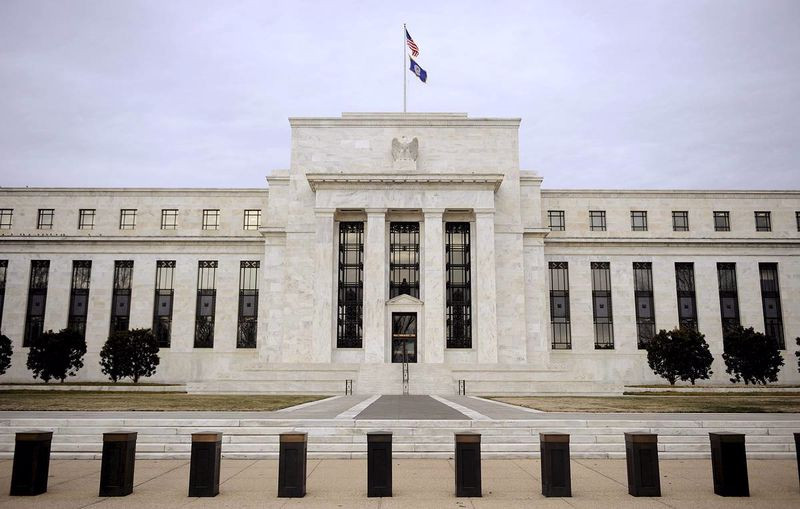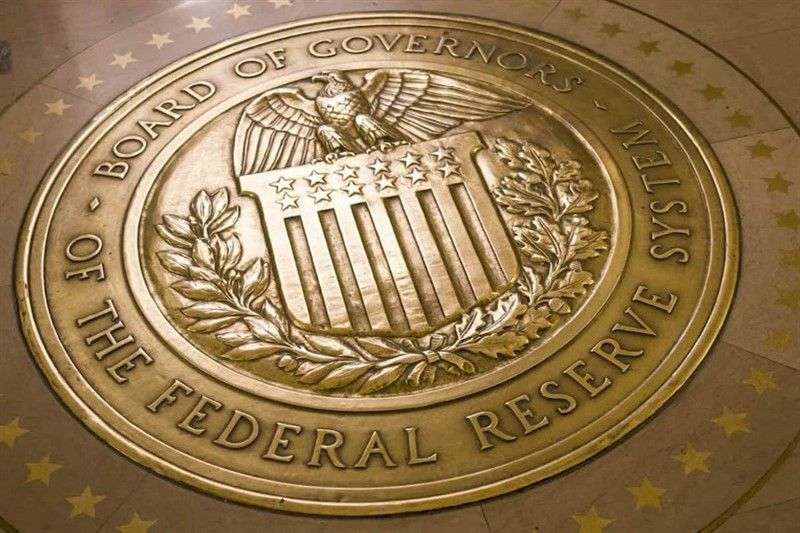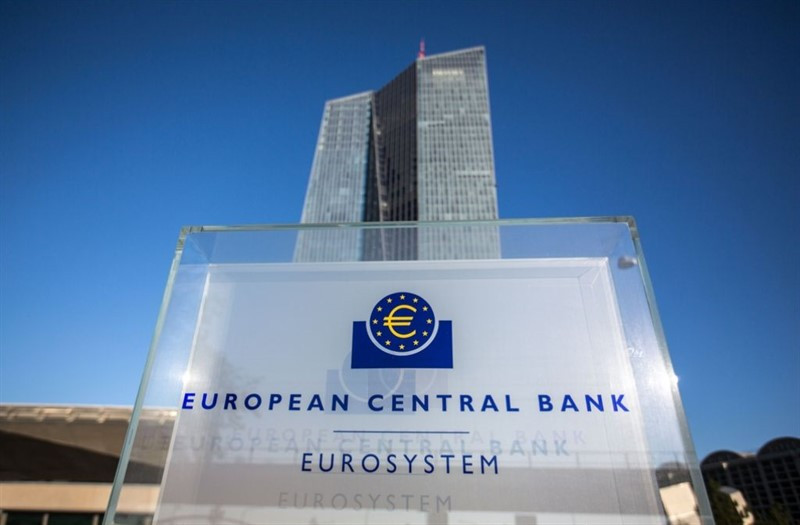The US currency ended Tuesday's rather volatile session almost unchanged.At the start of trading in Europe, the greenback updated a two-decade high, rising above 108.50. Then it moved to a downward correction, dropping to 107.70 points.
However, the dollar already regained its strength during the US session amid deteriorating market sentiment and closed at around 108.00.
The index of fluctuations in the foreign exchange market tracked by Deutsche Bank reached the highest values since March 2020.
According to Bloomberg, the mention of the word "recession" in news reports appearing in the agency's terminal soared to levels recorded at the height of the stock market crash caused by the COVID-19 pandemic at the end of the first quarter of 2020.
Despite the similarity of these two episodes, there is a noticeable difference between them. Two years ago, the number of mentions of the word "recession" in the news quickly decreased due to the prompt intervention of governments and central banks, which flooded the recessionary fire with budgetary and monetary stimulus.
Now, politicians and central bankers are putting the fight against inflation at the forefront and are even ready to sacrifice economic growth for this.
The International Monetary Fund (IMF) warned on Tuesday that it will be increasingly difficult to avoid a recession in the United States.
The authoritative organization has worsened the forecast of growth of the American economy for 2022 to 2.3% from 2.9%, for 2023 – to 1.0% from 1.7%.
The IMF believes that a surge in inflation creates systemic risks for both the United States and the global economy.
"The policy priority now should be a rapid slowdown in wage and price growth, without accelerating the processes that lead to recession. However, this will not be an easy task," the representatives of the Fund noted.
They recommend that the US government make decisions on the stalled proposals of US President Joe Biden on social spending and climate, which will promote job growth and reduce inflation.
The White House understands that if it fails to break the teeth of this monster, the Democrats will lose their majority in both the upper and lower houses of Congress in the midterm elections in November.
Therefore, Biden actually gave full carte blanche to Federal Reserve Chairman Jerome Powell and his colleagues in the fight against inflation, allowing them to use all the tools available in the arsenal of the US central bank.
The IMF hopes that the tightening of the Fed's monetary policy will help reduce inflation to 1.9% by the fourth quarter of 2023, compared with the forecast of 6.6% for the fourth quarter of 2022. According to the Fund's analysts, this will further slow down the country's economic growth, but it will still be possible for the United States to avoid a recession.
Key Wall Street indexes moved into positive territory on Tuesday after the White House published a memorandum stating that macroeconomic indicators for the first half of the year are not consistent with the recession. However, the positive impact of these remarks on the market turned out to be short-lived, and US stock indexes ended the trading session in the red. In particular, the S&P 500 sank 0.92% to 3,818.8 points.
Global stocks traded mostly in the red zone the day before, reflecting the gloomy mood amid growing concerns about a global recession. Disappointing data on both sides of the Atlantic only reinforced these concerns.
Thus, the ZEW Research Institute reported that economic sentiment in Germany fell to -53.8 points in July, which turned out to be much worse than the previous value of -28 points.
Meanwhile, the NFIB small business optimism index was released in the US, which fell to 89.5 points in June from 93.1 points in the previous month.
The signals of the deterioration of the situation in the global economy put pressure on the US stock market.
Investors fear that the slowdown in global economic growth will negatively affect corporate profits.
According to the consensus forecast of experts surveyed recently by FactSet, the profits of companies included in the S&P 500 index increased at the lowest pace since the end of 2020 in the last quarter - by an average of 4.3%. Three months ago, it was expected that the increase in profits would average 5.9%, and the deterioration in forecasts is due to the acceleration of inflation, as well as the rapid tightening of the Fed's monetary policy.
Interest rate futures in the United States put into quotes the probability that rates will rise to 3.50% by March 2023 from the current level of 1.75%.
The upcoming corporate reports will also show the effects of the strengthening of the dollar, as it reduces revenue from foreign activities and profits of companies with large foreign operations, Navellier & Associates notes.
Currently, the US currency is getting more expensive not because the United States is doing extremely well. It's just worse in other places.
"Although we believe a recession in America is likely in the next 12 months, the time of its onset may be more distant than the market currently thinks. Consequently, we believe that the market is betting too prematurely on a lower and earlier end of the Fed's monetary policy tightening cycle," TD Securities strategists said.
"The US economy is standing still, especially compared to some of its G7 counterparts (for example, the eurozone), and it will be very difficult to displace the US dollar, especially given that the euro remains very weak," they added.
"The EUR/USD pair has come dangerously close to parity; and although we expected this to provide some natural protection, the macroeconomic winds in Europe are huge, and the region's balance of payments is experiencing an epic deterioration, which is likely to continue. And without proper compensation from the euro, the dollar remains the king of the foreign exchange market," TD Securities said.
A strong and prolonged trade deficit in the currency bloc, formed due to a sharp increase in the cost of energy, was recorded for the first time since the creation of the eurozone.
The single currency fell in price against the US dollar by more than 4% in July, and since the beginning of the year it has lost about 12%.
The weakening of the euro is a favorable factor for local exporters, but it does not help the European Central Bank in the fight against inflation, which is at its highest in 40 years.
The deterioration of the economic prospects of the currency bloc means that the ECB will not be able to tighten policy on a par with its American counterpart.
Last month, the ECB announced that it intends to raise interest rates for the first time since 2011 – by 25 basis points. Meanwhile, the Fed has already increased the cost of borrowing this year by 150 bps.
Divergence in interest rates on both sides of the Atlantic, as well as different approaches of the Fed and the ECB to the implementation of monetary policy, support the dollar and pressure on the euro.
The more cautious approach of the ECB, contrasting with the aggressive position of the Fed, is explained by the fact that the ECB has to supervise a whole group of countries with different economic power and the ability to "digest" an increase in interest rates.
In addition, central bankers in Frankfurt am Main are not allowed to sleep peacefully at the risk of fragmentation - an increase in spreads between the yields of bonds of eurozone member countries. The ECB is currently developing a special tool to support the debt markets of weak eurozone countries.
The ECB should model its upcoming bond-buying scheme aimed at limiting the cost of borrowing for Italy and other debtor countries based on the one it announced during the debt crisis, Bundesbank Chief Joachim Nagel said on Monday.
"The design should be based on the experience of the DMT (Direct Money Transactions) program," Nagel said, adding that this tool should not create obstacles to the consolidation of fiscal policy.
The mechanism of direct monetary operations announced in 2012 was never used, but its very existence refuted speculation about the collapse of the eurozone.
The single currency as a concept has faced problems in the past. Since its formation, skeptics have pointed out the difficulties of managing a monetary union of disparate economies. It is still unclear whether the current ECB leadership will be able to keep the promise made by Mario Draghi, namely: to do everything necessary to save the single currency.
In any case, investors should be prepared for a new round of discussions on the viability of the eurozone, given that the single currency has come close to an important watershed – parity with the dollar.
The day before, the EUR/USD pair almost reached 1.0000, the lowest level since December 2002. Then it rebounded by almost 70 points, but failed to develop a momentum to recovery and ended trading with a symbolic increase (by 0.02%), near the 1.0040 mark.
"Market participants held short positions on the euro in anticipation of a breakthrough below the level of parity with the dollar, but we did not get it, which forced investors to buy the single currency back," Mizuho analysts noted.
According to experts, some rebound of the single currency was also due to the fact that the $1.00 area is an important psychological level.
The pattern was repeated on Wednesday.
The greenback jumped above 108.50 points again, after the release of data on record inflation in the United States since November 1981.
By the end of June, consumer prices in the country increased by 9.1% in annual terms. On a monthly basis, the indicator increased by 1.3%. Analysts expected the first indicator at 8.8%, and the second at 1.1%.
Against this background, the EUR/USD pair fell to 1.0004 for the company with the key Wall Street indices, which showed a sharp decline at the opening of trading in New York, losing on average about 0.9%.
However, the euro managed to recover losses fairly quickly due to the fact that the greenback retreated, updating the highs of twenty years ago.
Apparently, the "hot" report on US inflation has already been included in the quotes. The USD index has grown by more than 1% this week, and dollar bulls decided to take profits.
The correction in the dollar is also due to the fact that some market participants seem to be betting that inflation in the US has peaked.
However, such an opinion may be erroneous. The cost of renting a home in America is able to continue to grow, and its share in the consumer price index is about one-third. At the same time, data on producer prices indicate that in August or September the CPI may exceed the July figures.
High inflation requires the US central bank to tighten monetary policy quickly, which has contributed to a significant strengthening of the dollar since the beginning of this year.
The greenback pierced the multi-year resistance in the range of 103-104 in June. At the same time, the dollar's growth occurs along a parabola with an increasingly increasing angle of inclination.
Another, no less significant, resistance area is located in the range of 108-109. If the dollar makes its net breakdown, then from here it will open the way to the high of July 2021 at the level of 121.
"The June consumer price index in the US was disgusting, there is nowhere without it. The Fed has no choice but to follow a more aggressive path, although this increases the likelihood of a recession next year," Cornerstone Financial analysts said.
The latest data shows that the Fed's rate hike does little to combat overheated inflation, painting a rather alarming picture.
Thus, a 100 basis point rate hike may be on the table after strong inflation data on Wednesday.
This is likely to lead to an increase in the difference in interest rates on both sides of the Atlantic, which will keep pressure on the single currency, which is suffering due to growing expectations of a deterioration in the economic situation in the eurozone as a result of a reduction in Russian gas supplies to the region.
"From a fundamental point of view, it is not difficult to draw a scenario in which the EUR/USD pair can break below 1.00 and stay at lower levels during the winter months. This was already the case some time ago," Rabobank strategists said.
"If the Nord Stream-1 gas pipeline is re-launched on time next week after scheduled maintenance, the euro will probably get a breather. Nevertheless, even if the single currency receives support, we expect that the strength of the US dollar will prevail until next year, so the growth of EUR/USD may be limited even with good news regarding the Nord Stream-1," they added.
"At the moment, we maintain our monthly forecast for EUR/USD at 1.0300. The data that Russian gas supplies to Europe will continue to be interrupted by winter will force us to further lower our forecasts for the euro," Rabobank said.
The EUR/USD pair has almost reached parity. Where to now? Credit Suisse economists are wondering. They expect that the "bottom" will be reached here and the consolidation/recovery phase will begin.
"We believe that parity/0.99 remains the lower limit for the pair so far, and further consolidation/recovery phase may occur. At the same time, EUR/USD is at the lower limit of its 5-month channel and is oversold. Resistance for recovery is initially observed at the level of 1.0185-1.0192, and more serious resistance starts at 1.0350 and extends to the 55-day moving average, which is currently located at 1.0520," the analysts noted.
"We continue to identify the broader trend as downward, and therefore expect consolidation/recovery to be a convenient selling opportunity. We are inclined to believe that eventually a steady breakthrough of the 0.99 level will be made. This will clear the way for further weakening of the pair, to support at 0.9750, and the next significant support is marked at 0.9609-0.9592 (September 2002 low and 2001 high). Although we forecast a new consolidation phase at 0.9609-0.9592, a net breakthrough in this area may lead the pair to the next support at 0.9331," Credit Suisse said.
















